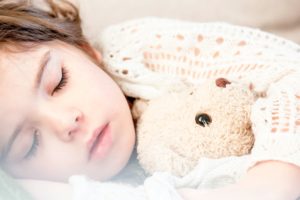Can Children Have Sleep Apnea?
March 24, 2022
 Over 18 million Americans live with obstructive sleep apnea. The condition causes frequent pauses in breathing from an obstruction in the upper airway. Although it’s thought to only affect adults, children aren’t immune to it. It’s believed that 7% to 9% of children have a sleep-related breathing disorder; however, up to 90% of cases are undiagnosed. If your child suffers from loud snoring, they might be at risk. Here’s what you need to know about children’s sleep apnea, so you and your little one can sleep peacefully.
Over 18 million Americans live with obstructive sleep apnea. The condition causes frequent pauses in breathing from an obstruction in the upper airway. Although it’s thought to only affect adults, children aren’t immune to it. It’s believed that 7% to 9% of children have a sleep-related breathing disorder; however, up to 90% of cases are undiagnosed. If your child suffers from loud snoring, they might be at risk. Here’s what you need to know about children’s sleep apnea, so you and your little one can sleep peacefully.
Signs of Sleep Apnea in Children
Young patients are affected by 2 types of sleep apnea: obstructive or central. Obstructive sleep apnea results from a blockage in the nose or throat, while central apnea is caused by improper brain function. The brain doesn’t send the correct signals for proper breathing. Unlike obstructive sleep apnea, central usually doesn’t cause snoring. Although they may not share snoring as a symptom, there are various overlapping signs of the two, which can include:
- Coughing or choking while sleeping
- Pauses in breathing
- Breathing through the mouth
- Sleep terrors
- Bedwetting
- Sleeping in odd positions
Symptoms of sleep apnea don’t only occur at night. If pauses in breathing are affecting your child’s sleep quality, they can become irritable or have difficulty concentrating. Studies have also found a connection between untreated sleep apnea and hyperactivity. They may also experience growth delays, heart problems, or cognitive delays.
Treating Childhood Sleep Apnea
Every case differs, so the treatment method varies by child. Some children may outgrow the condition, but their doctor may still monitor them to ensure there is an improvement. If treatment is necessary, solutions may include:
- Lifestyle Choices: Obesity can increase the risk of sleep apnea. A healthy diet and regular exercise can help your child maintain a healthy weight.
- Nasal Steroids: Nasal steroids can reduce inflammation in the nose to open the airway.
- Surgery: Large tonsils or adenoids can contribute to obstructive sleep apnea. If other methods don’t offer improvement, their physician may recommend surgery to remove them.
- CPAP Therapy: A machine delivers a gentle stream of air pressure through a mask worn over the mouth and nose to keep their airway open.
- Oral Appliance: An oral appliance looks like an athletic mouthguard; however, it doesn’t protect the teeth. Instead, it repositions the jaw and tongue to prevent an obstruction in the airway.
Promote Your Child’s Sleep Quality
Your child’s mental and physical wellness relies on adequate rest. Don’t let sleep apnea affect their health or quality of life. If your child shows signs of the disorder, consult with their physician to determine if sleep apnea is the culprit.
About Dr. Robert Dernick
Dr. Dernick earned his dental degree from the University of Texas Dental Branch at Houston in 1979. He has regularly continued his education over the years to focus on sleep apnea and other similar breathing issues. He provides noninvasive sleep apnea solutions. If your child needs sleep apnea therapy, contact our office today to request an appointment.
No Comments
No comments yet.
RSS feed for comments on this post.
Sorry, the comment form is closed at this time.
 Sleep Apnea &
Sleep Apnea &